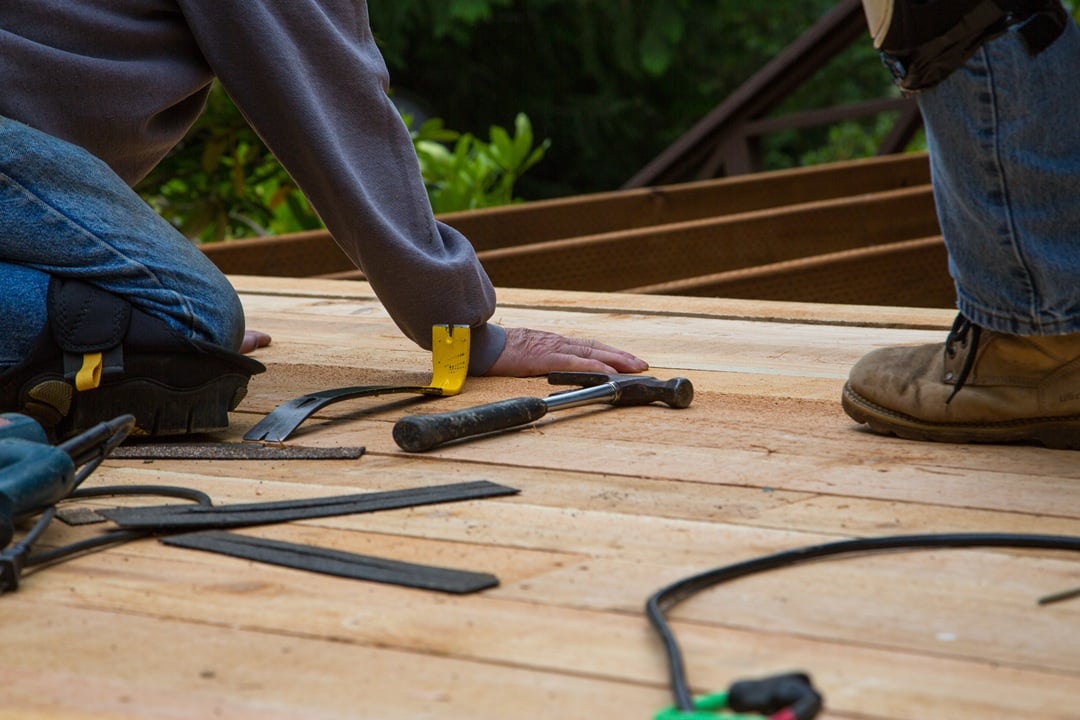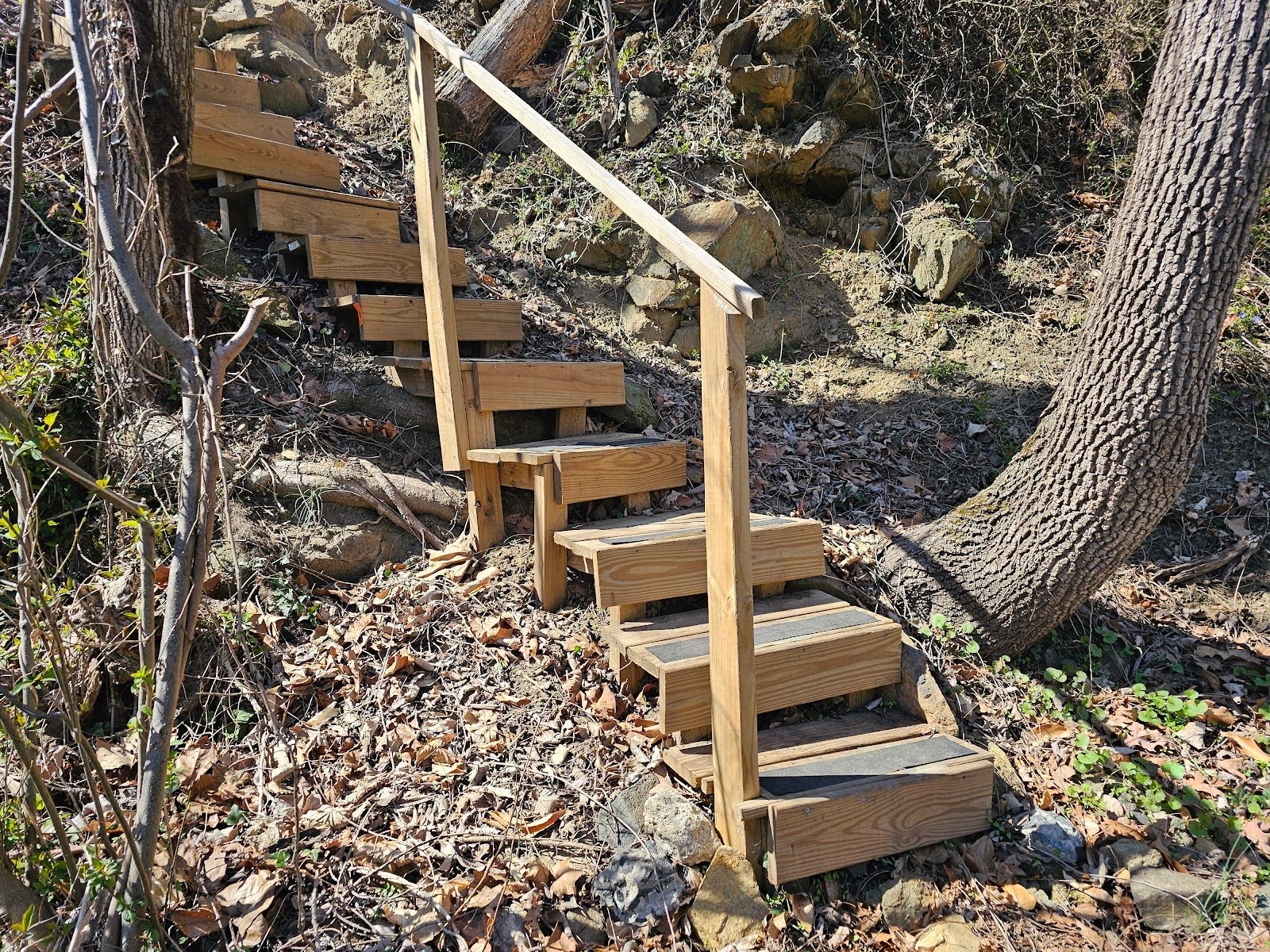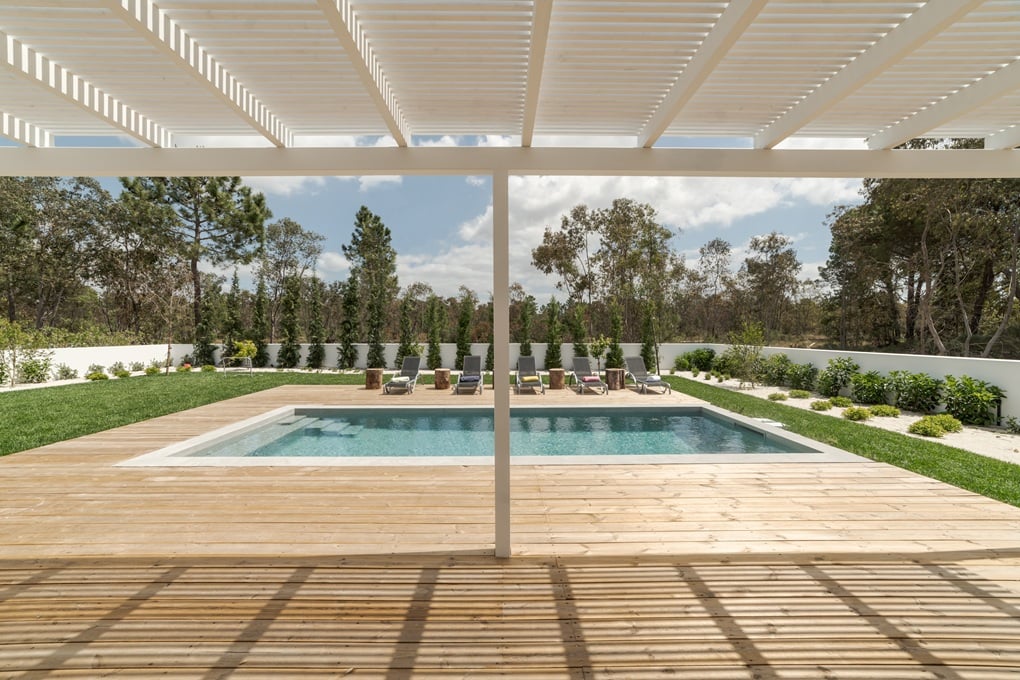Deck Platform Design Close to Ground Level
This past week, we started looking at this particular deck, set just above the adjacent grade. It isn’t a typical elevated deck that we find on the back of many houses here in Washington, DC. In most cases elevated decks like that are attached to the rear of the house and basically often connect to the back door at a kitchen.
It works well to have a deck off the back of a house from a kitchen because it’s a great place to sit and serve and eat food in an outdoor setting. There’s a couple really good months here in Washington DC where the weather is just right and the mosquitoes aren’t too bad so it’s nice to have a space like that to really enjoy the best months of the year with a little bit of outdoor space.
This deck is different though because it basically works like a platform in the middle of a yard. The landscape and grade of the space at this particular location has a slope which makes it a little bit inconvenient for setting up a table or seating and gathering directly in the yard. The deck helps because it allows for at least a terraced section of different levels of space. We talked about some of these details this past week and today we’re going to look closer at some of the other finer points related to the finishes of the deck, the intermediary supports between areas of longer stands and the fastening details to hold the deck together.
In the picture below, you can see that although the vast majority of this deck has no remaining paint, this deck was once painted. We believe this deck is at least more than halfway through its intended lifespan. It’s probably over 10 years old. Although there isn’t much paint left, right in the center of the picture below, you can see a large area where there’s gray paint on top of the aged gray weathered wood. It’s important that when painting a deck, the deck be relatively dry. Wood, in general, contains a degree of moisture for many years after the wood is cut and even kiln dried.
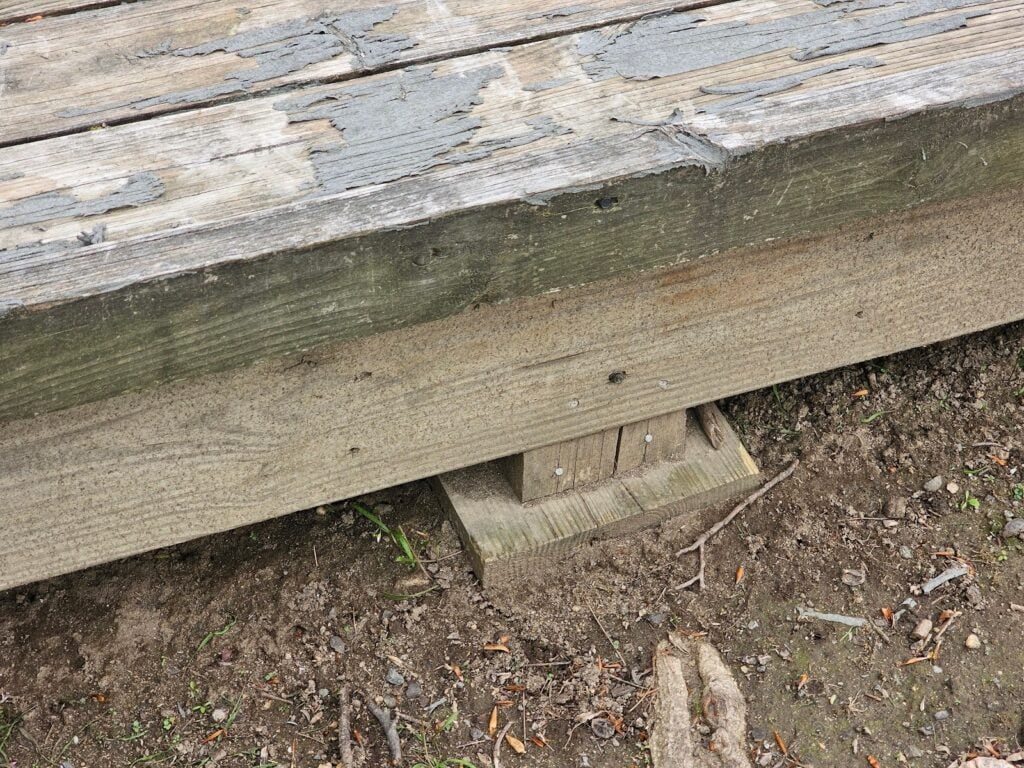
When you look at the wider angle of the deck, you can see there are areas of remaining paint sprinkled throughout the overall surface of the deck. It would be a good idea, at this point, to remove as much of those remaining patches of paint as possible and give the deck a light sanding at least and a repainting or application of a stain and sealer. Stains are not required.
They’re basically an aesthetic choice yet, the darker the color of the stain used, the more inherent protection it provides from exposure to UV. The UV on sunlight can really damage wood decks quickly. That’s why it helps to have stains and sealers to protect the deck. With exposure to residual rainfall and water or precipitation, sealers help preserve the deck. A deck that is well maintained can last at least twice as long as a deck that is not well maintained.

This particular deck is set up in an area that allows people to sit and watch performances. There are small decks off to the side that allow smaller groups to also sit, or for setting elevated furniture or elements for entertaining like drink tables or coolers.
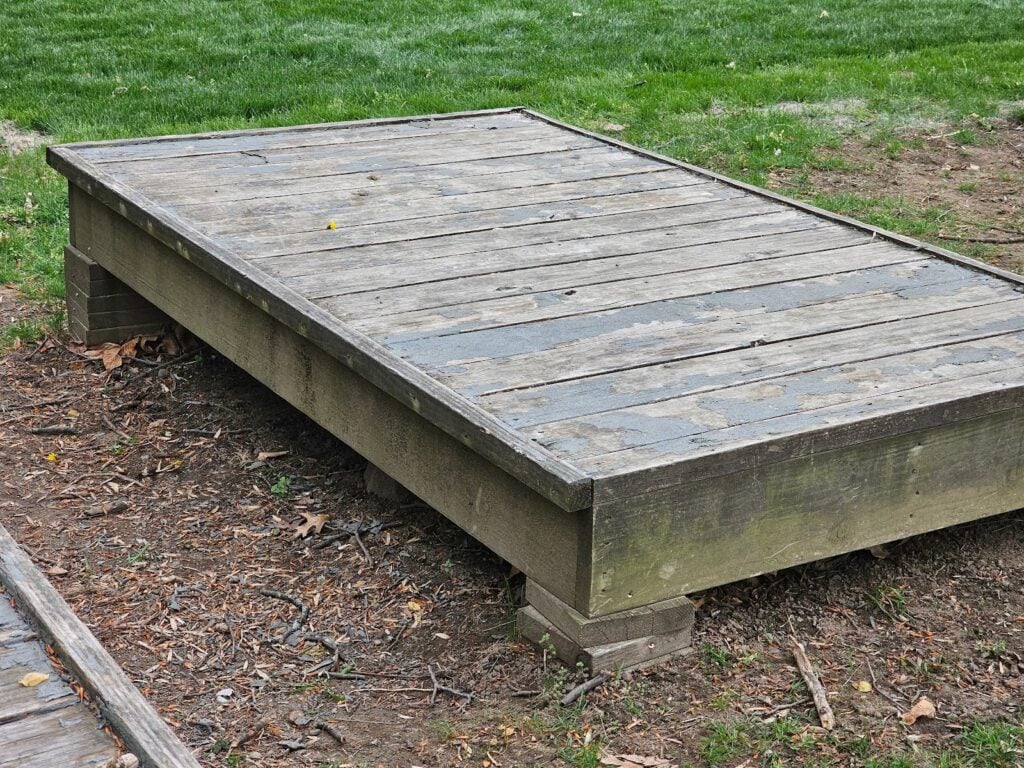
The terracing of the larger deck, essentially the fact that the deck is split into two sections, one on top of the edge of the other, allows the deck to conform a bit to the adjacent grade. There are also spots where specific modifications have been made to the height of the substrate bearing points to lift the deck and keep the deck relatively flat where the lower portion of the deck is lifted more significantly at the bearing points.
Here you can see they’ve used a sandwich assembly of five pieces of 2x boards. These five pieces will raise the height of the deck roughly 7.5 in above the ground. However, it’s really important to understand that laying one board flat on top of the other and repeating that multiple times may shim up an area of a deck, but it does not create a stable connection point.
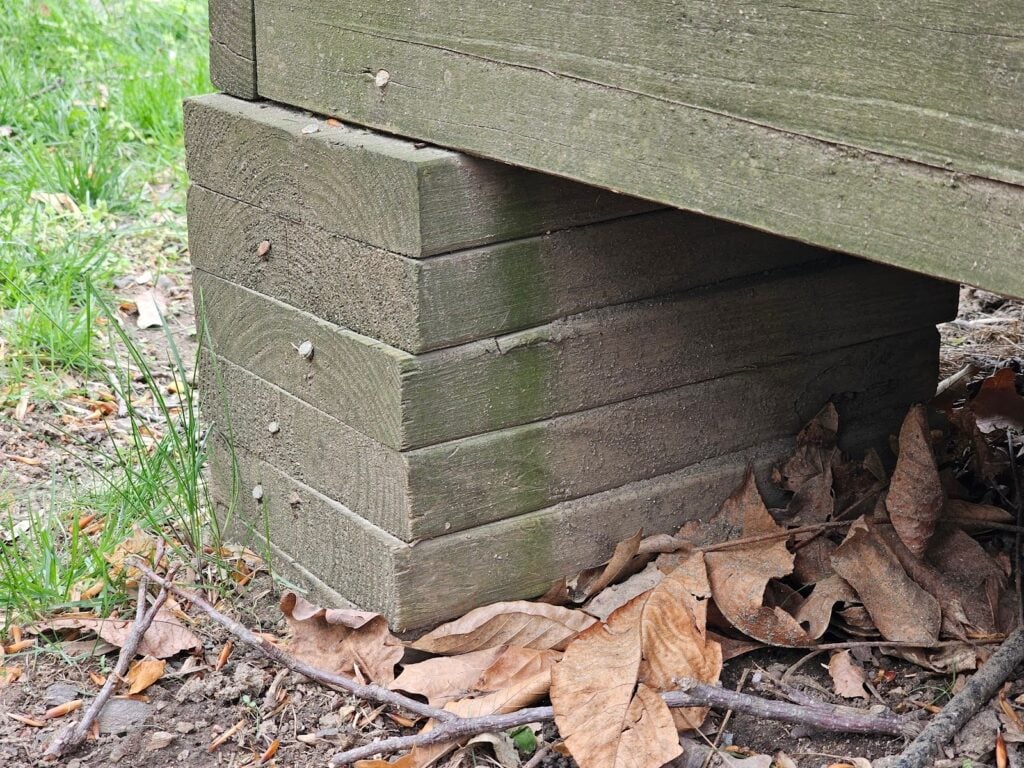
The framing joists are joined at the corner, similar to most rim joists, at an outer edge. Here though, we can’t see the underlying connection to identify whether or not the original builder had used braces or steel support hardware in addition to the fasteners exposed at the exterior edges of the framing. They have used structural screws, not just regular deck screws. Regular deck screws have very high ratings for resistance to pull out, shear, and tensile forces, but these particular bolts or lags are way stronger.
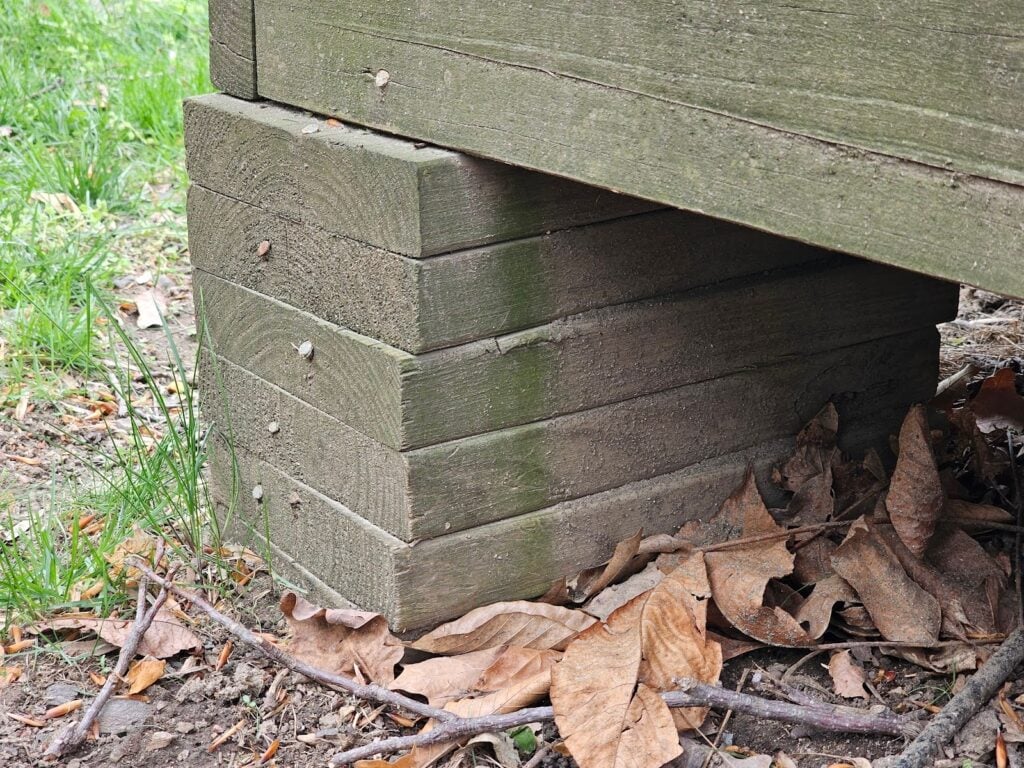
The next picture below shows the head of one of these structural lags. We believe that these particular legs were installed years after the original construction. In fact, it’s likely that this particular style of structural screw wasn’t even available at the time of the original construction. They may have been installed as an afterthought to reconnect and or prevent shifting and or separation of boards at the deck frame.
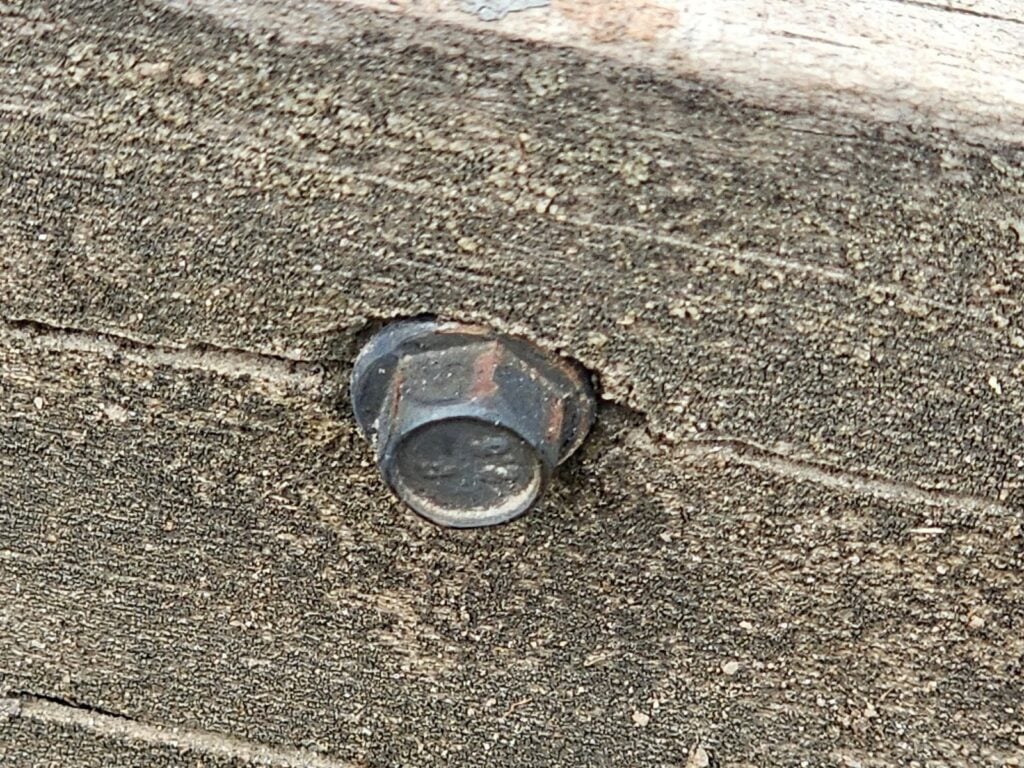
A closer view of the hex drive screw used follows below.

Use a contractor who understands and cares about doing things right. Always, feel free to reach out to us here at Dupont Decks and Patios. We are happy to help with almost all steps of the deck building and design process. A backyard and outdoor space should make a significant, positive impact on both quality of life and home value. We can help with more than just decks, we also build patios, pergolas, ramadas, awnings, gazebos, arbors, and privacy fences.
Let us know about your ideas and talk to us if you have questions about possibilities. We are happy to participate in improving your outdoor space and quality of life! You can call us at (202) 774-9128. You can find us online at https://dupontdeckspatiosdc.com and you can email us there as well at https://dupontdeckspatiosdc.com/contact-us


